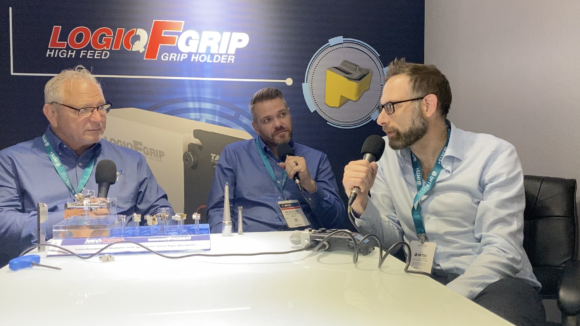At IMTS 2022, I had the privilege of interviewing Bryan Stusak and Steve Vanderink, two product specialists from Iscar Metals, world renown seller of cutting tools for machining. We talked about the latest developments in cutting tool technology that enable faster changeover, and how to save money by using inserts properly when removing small amounts of material.
If you’ve been wishing for a more technical episode of Swarfcast, this is the one for you.
Facebook: https://lnkd.in/dB_nzFzt
Instagram: https://lnkd.in/dcxjzVyw
Twitter: https://lnkd.in/dDyT-c9h
Main Points
I chose to highlight several video clips from the interview because Bryan and Steve gave great visual demonstrations. There is a ton more great information in the podcast, which you have the option of watching on the Today’s Machining World YouTube channel or on todaysmachiningworld.com/videos/.
Inserts Designed For Shallow Depths of Cut (See videos below)
The production of 3D printed components is booming, yet still the parts are usually not 100% complete after printing. They require light machining to reach a desired finish. It’s important to use a different type of carbide insert if one is cutting near net shape material rather than cutting a block of material. Producing very small parts on a CNC Swiss lathe also requires inserts designed for light cutting because it often entails taking off a small amount of material from thin bar stock. In both cases, if you use the right type of inserts, meant for taking off less material, you will wear them out less and machine more efficiently–saving you money.
What is Carbide?
After all these years hearing tooling companies tell me about carbide cutting tools, I decided to ask the dumb question, “What is carbide?”
Bryan explains that carbide is created when tungsten powder is mixed with a binder or glue such as cobalt. The mixture is then compressed in a die set or a mold in the shape of the insert. When the insert in a green state is baked in an oven it hardens. The hardened carbide metal is up to 80+ Rockwell hardness, which is harder than the material than it needs to cut.
Saving Money Using an Indexible Feed Mill
Bryan explains Iscar’s Indexible feed mill called a NANMILL, which goes down to 5/16” in diameter (2 flute effective). The insert has a trapezoidal design at its top that allows the screw to dovetail the insert into the pocket. Typically, an insert screw goes through the center of the carbide to clamp it in place. The NANMILL’s design is more user-friendly because the user does not have to back the screw completely out of the cutter body to index the insert. Instead, one loosens the screw and pulls it out of the pocket with a wrench (included with the product) that has a magnet. Then you rotate it to a fresh cutting edge.
Bryan explains that this gives a user a cost per edge advantage over a solid carbide tool because they get several cutting edges. A solid carbide feed mill can only be used once. A user can’t regrind it because the geometry is too complicated, so it gets tossed.
Podcast: Play in new window | Download




